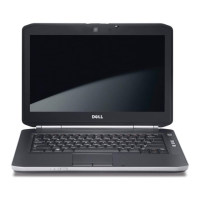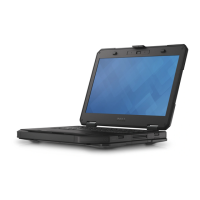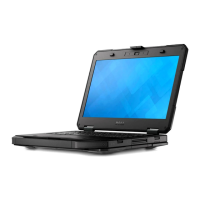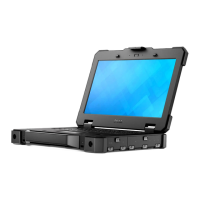Fingerprint Reader
This topic explains the software used in fingerprint reader
The Portables Technology has an integrated fingerprint reader located on the palm rest to the right of the touch pad. The fingerprint
reader is an option, so not all systems have it. Included with the driver for the fingerprint reader is a software package from Dell
ControlVault, that provides functionality for the device. Dell provides all support for the software, same as on the Latitude systems.
Dell ControlVault Software
The software package for the fingerprint reader is ControlVault by Dell. It provides the following functionality to the fingerprint reader:
• Uses the fingerprint reader for Windows® logon and system start-up password authentication
• Registers websites and Windows applications for password replacement
• Launches a favorite application with a finger swipe
• Stores confidential information in an encrypted folder
To gain any of this functionality, a user must first enroll fingerprints. An easy-to-follow wizard guides the user through the enrollment
process. The user can choose to save fingerprints to the hard drive or the fingerprint reader
NOTE:
A user should enroll more than one finger's print.
USB features
Universal Serial Bus, or USB, was introduced in 1996. It dramatically simplified the connection between host computers and peripheral
devices like mice, keyboards, external drivers, and printers.
Let's take a quick look on the USB evolution referencing to the table below.
Table 19. USB evolution
Type Data Transfer Rate Category Introduction Year
USB 2.0 480 Mbps High Speed 2000
USB 3.0/USB 3.1 Gen 1 5 Gbps Super Speed 2010
USB 3.1 Gen 2 10 Gbps Super Speed 2013
USB 3.0/USB 3.1 Gen 1 (SuperSpeed USB)
For years, the USB 2.0 has been firmly entrenched as the de facto interface standard in the PC world with about 6 billion devices sold, and
yet the need for more speed grows by ever faster computing hardware and ever greater bandwidth demands. The USB 3.0/USB 3.1 Gen 1
finally has the answer to the consumers' demands with a theoretically 10 times faster than its predecessor. In a nutshell, USB 3.1 Gen 1
features are as follows:
• Higher transfer rates (up to 5 Gbps)
• Increased maximum bus power and increased device current draw to better accommodate power-hungry devices
• New power management features
• Full-duplex data transfers and support for new transfer types
• Backward USB 2.0 compatibility
• New connectors and cable
The topics below cover some of the most commonly asked questions regarding USB 3.0/USB 3.1 Gen 1.
36
Technology and components

